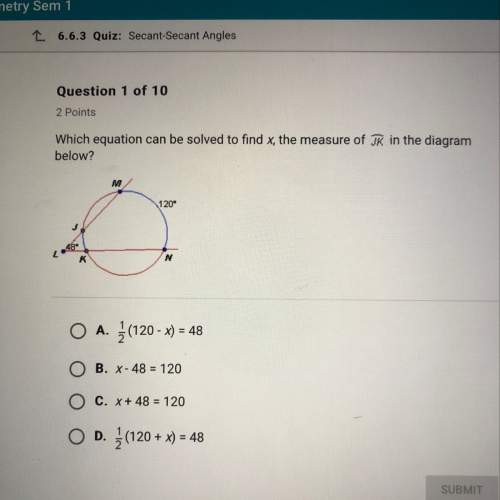
Mathematics, 05.02.2021 18:20 vaehcollier
Someone help what's the answer to this
Number of study sessions Total number of students in the class
Morning class 25 16
Night class 20 22
If the total number of study sessions for the night class were proportional to the total number of study sessions for the morning class, how many study sessions would you expect the night class to have?
We would expect the night class to have study sessions? choose one of these answers
5,10,12,14,20,25,26,34
For the next part: First find the difference between the last answer and the actual number of study sessions that they have.
Then choose the correct dropdown for the number that is the difference. Don't reuse the first number that you entered!
Then choose the correct dropdown for more or less?
This means the night class would have more or less?
More or fewer study sessions than the 20 that they actually have?

Answers: 3


Another question on Mathematics

Mathematics, 21.06.2019 12:40
I've never been good at math he told he loves but he keeps cheating on me, so it ain't adding up sis
Answers: 2

Mathematics, 21.06.2019 15:20
(a) (8%) compute the probability of an even integer among the 100 integers 1! , 2! , 3! , until 100! (here n! is n factorial or n*(n-1)*(n-2) *… 1) (b) (16%) compute the probability of an even integer among the 100 integers: 1, 1+2, 1+2+3, 1+2+3+4, …., 1+2+3+… + 99, and 1+2+3+… + 100
Answers: 1

Mathematics, 21.06.2019 15:30
Asquare is dilated by a scale factor of 1.25 to create a new square. how does the area of the new square compare with the area of the original square? a)the area of the new square is 1.25 times the area of the original square. b)the area of the new square is 2.50 times the area of the original square. c)the area of the new square is 1.252 times the area of the original square. d)the area of the new square is 1.253 times the area of the original square.
Answers: 1

Mathematics, 21.06.2019 18:40
Juliana says that she can use the patterns of equivalent ratios in the multiplication table below to write an infinite number of ratios that are equivalent to 6: 10. which statement explains whether juliana is correct? she is correct because she can multiply 6 and 10 by any number to form an equivalent ratio. she is correct because 6: 10 can be written as 1: 2 and there are an infinite number of ratios for 1: 2. she is not correct because the multiplication table does not include multiples of 10. she is not correct because 6: 10 is equivalent to 3: 5 and there are only 9 ratios in the multiplication table that are equivalent to 3: 5.
Answers: 1
You know the right answer?
Someone help what's the answer to this
Number of study sessions Total number of students in the cla...
Questions




Mathematics, 08.03.2020 20:43

Social Studies, 08.03.2020 20:43

Mathematics, 08.03.2020 20:44




Mathematics, 08.03.2020 20:45





History, 08.03.2020 20:47


Mathematics, 08.03.2020 20:47






